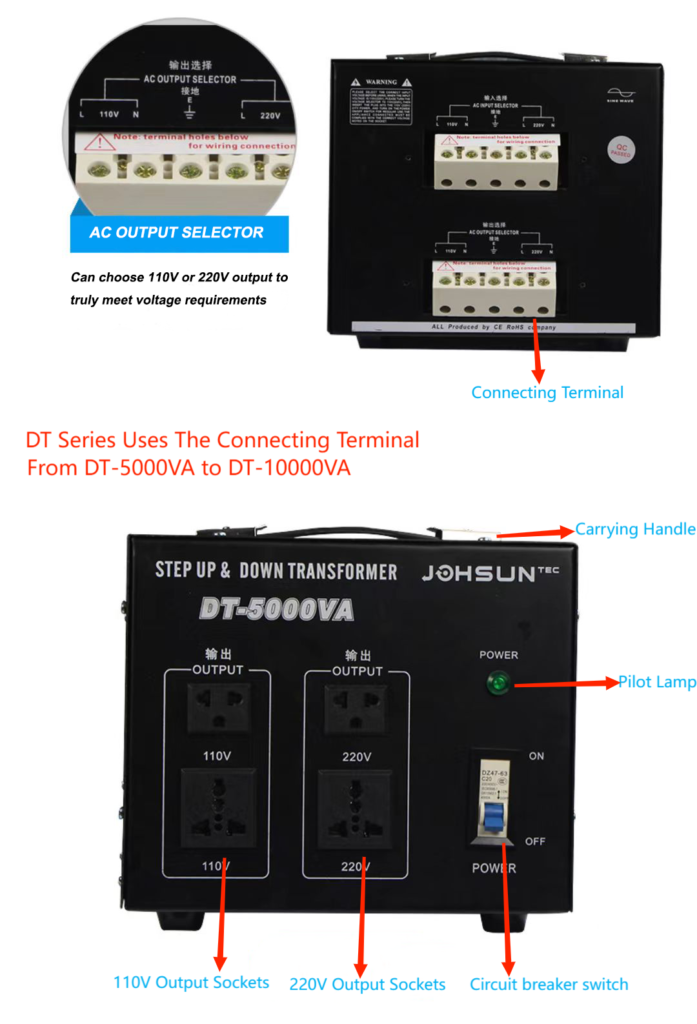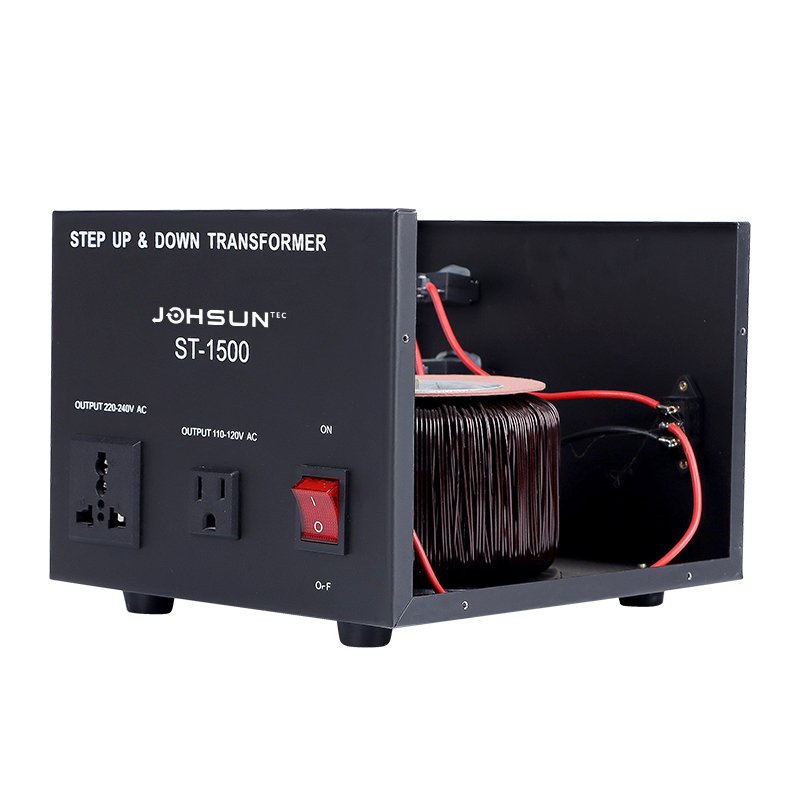The role of voltage stabilizer and their importance in power systems
A voltage stabilizer SBW Series is a device used to regulate and stabilize voltage, ensuring that the output voltage in the power system fluctuates minimally within a set range. Voltage fluctuations in power systems may cause damage to electronic and industrial equipment, and even cause safety accidents. The voltage stabilizer provides a stable output voltage by regulating changes in input voltage, thereby protecting the normal operation of the equipment.
In modern power systems, the importance of voltage stabilizer cannot be ignored. It not only extends the service life of equipment, but also improves energy efficiency and reduces failures and downtime caused by voltage fluctuations. Especially in occasions where voltage stability is required, such as medical equipment, communication equipment, and precision instruments, voltage stabilizer are essential components.

Applicability of different types of voltage stabilizer in different application scenarios
Different types of voltage stabilizer have their own advantages in different application scenarios according to their working principles and design characteristics. For example, in low-power applications, linear voltage stabilizer are usually the first choice, while switching voltage stabilizer are more suitable in situations with high efficiency and high power requirements. Understanding the applicable scenarios of different types of voltage stabilizer will help you choose the most suitable voltage stabilizer solution.
Linear stabilizer
Linear stabilizer are relatively simple devices that control the output voltage by adjusting the conduction state of transistors. This type of regulator has advantages such as low noise and fast response, but its efficiency is low because it dissipates excess energy to maintain a stable output. Linear regulators are suitable for applications that are sensitive to noise and have low power requirements, such as audio equipment, sensors, and low-power microprocessors. However, due to their low efficiency, linear stabilizer are not suitable for applications with high power requirements or where efficient energy conversion is required. In these cases, other types of regulators may be more appropriate.
Switching stabilizer
Switching stabilizer regulate the output voltage by switching the switching element at high speed, and their efficiency is usually much higher than that of linear stabilizer. These regulators can effectively convert the input power to the required output and can maintain high efficiency under most load conditions. Switching regulators are widely used in applications that require high efficiency and high power density, such as computer systems, electric vehicle charging stations, and portable electronic devices.
Although switching regulators have high efficiency, they generate large electromagnetic interference (EMI) during operation, which may affect some sensitive equipment. Therefore, special attention should be paid to EMI suppression measures when designing and selecting switching regulators.
Relay stabilizer
Relay regulators regulate the output voltage by switching between different taps using a mechanical relay. This design is simple and low-cost, so it is often used for basic power protection in home or small commercial environments. However, due to the mechanical delay in the relay switching process, relay regulators are not as fast as other types, and their durability is also limited by the wear of mechanical parts. Despite this, it is still an affordable and effective solution, especially in scenarios where accuracy is not a high requirement and the budget is limited.
Servo-controlled voltage stabilizer
Servo-controlled voltage stabilizer regulate output voltage by driving a variable transformer via a servo motor. This design provides high accuracy and fast response, so it is often used in large industrial equipment or laboratory instruments that require stable, high-precision power supply. Servo-controlled voltage regulators can handle large input fluctuations and maintain a stable output.
However, because servo control systems rely on mechanical moving parts, they have high maintenance costs and may experience wear problems over long-term use. In addition, these devices are usually large in size and are not suitable for space-limited or mobile applications.

Contactless stabilizer
Contactless stabilizer use electronic components instead of traditional mechanical relays for regulation, so they have faster response speeds and longer service life. These regulators can complete adjustments within milliseconds, which is very suitable for applications that require extremely high power supply stability and frequent load adjustment conditions, such as data centers, communication base stations and other critical infrastructure.
The contactless design eliminates mechanical wear problems, so its reliability is relatively high. However, due to its increased complexity, contactless regulators are usually more expensive and are not suitable for small applications with limited budgets.
Inductive stabilizer
Inductive regulators use the principle of inductive coupling to adjust magnetic flux to achieve output current and voltage stability. These devices are generally rugged, durable, and can withstand large input fluctuations, so they are widely used in industrial environments such as factory automation and power transmission.
Although inductive regulators have good durability, they are large, heavy, and have a relatively slow response speed. Therefore, they are generally not suitable for small or portable devices that require a fast response.
Integrated voltage stabilizer
Integrated voltage stabilizer integrate all necessary components on a single chip, making them small and easy to use. Such devices are often used in consumer electronics, small portable devices, and embedded systems. Integrated voltage regulators have the advantages of low cost and easy mass production, while also providing good performance.
However, due to their high integration, their heat dissipation capacity is limited, so they are not suitable for high-power, high-heat generation scenarios. In addition, integrated voltage stabilizer can usually only handle relatively simple load requirements and may not provide sufficiently precise regulation capabilities for complex or dynamically changing loads.
Type comparison and selection guide
Selecting the right type of voltage stabilizer requires a combination of factors, including power requirements, efficiency, size, cost, and operating environment. For example, for low-power applications, linear or integrated regulators may be preferred; while for efficient energy conversion needs, switching regulators are a better choice. If you need to handle large input fluctuations and require fast response, contactless or servo-controlled regulators may be the best solution.
In addition, environmental factors such as the presence of strong interference sources and electromagnetic compatibility requirements need to be considered, which may affect the final selection.
Advantages and limitations of different types of voltage stabilizer in their respective fields
| Type of voltage stabilizer | Advantages | Disadvantages |
|---|---|---|
| Linear stabilizer | – Simple design – Low noise – Few components – Low cost | – Low efficiency – Generates heat – Only supports step-down conversion |
| Switching stabilizer | – High efficiency – Supports step-up and step-down – Compact size | – Complex design – Generates noise – Higher cost |
| Relay-based stabilizer | – Simple structure – Low cost | – Slow response time – Mechanical parts wear out |
| Servo-controlled stabilizer | – High precision – Fast response | – Large size – High maintenance costs |
| Contactless stabilizer | – Fast response – High reliability | – Expensive |
| Induction stabilizer | – Durable and robust | – Large and heavy – Slow response |
| Integrated voltage stabilizer | – Compact size – Easy to use | – Limited heat dissipation – Not suitable for complex loads |







